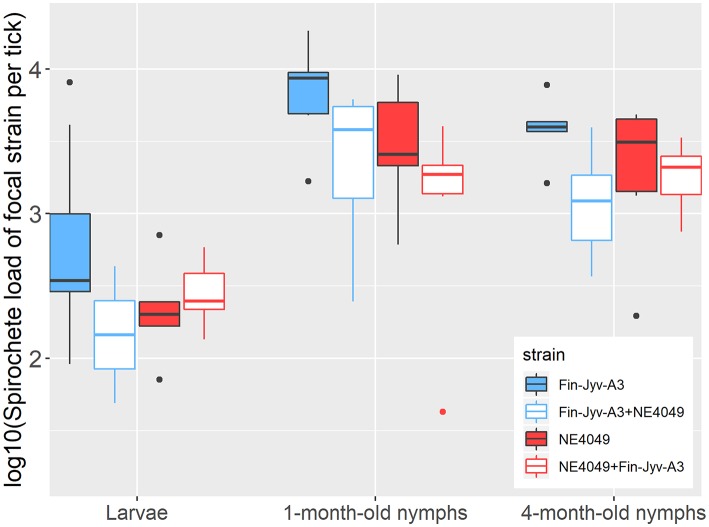Figure 4.
The B. afzelii spirochete loads in immature I. ricinus ticks are shown as a function of three factors: (1) tick age (engorged larvae, 1-month-old nymphs, and 4-month-old nymphs), (2) strain (Fin-Jyv-A3 in blue and NE4049 in red), and (3) competition (competition absent in solid colors vs. competition present in white). The strain-specific spirochete loads were log10-transformed to normalize the residuals. The graph shows the raw data and not all observable differences are statistically significant. According to the parameter estimates of our statistical analysis, competition between strains reduced the spirochete loads of both strains in all three age classes of ticks. Our statistical analysis also found that strain Fin-Jyv-A3 had a higher spirochete load in immature I. ricinus ticks compared to strain NE4049. Each data point represents the mean for a single mouse. The boxplots show the medians (black line), the 25th and 75th percentiles (edges of the box), the minimum and maximum values (whiskers), and the outliers (solid circles).

